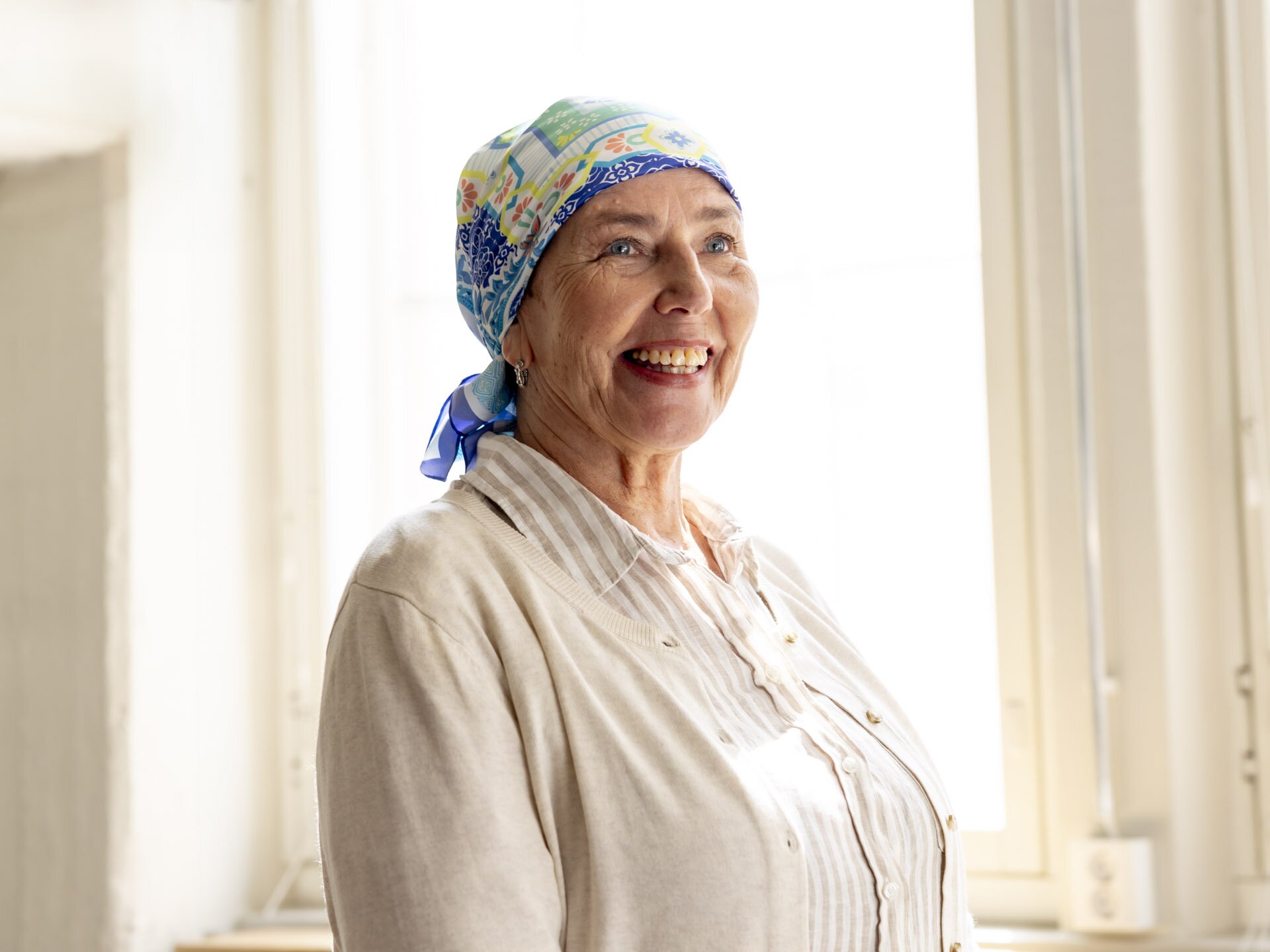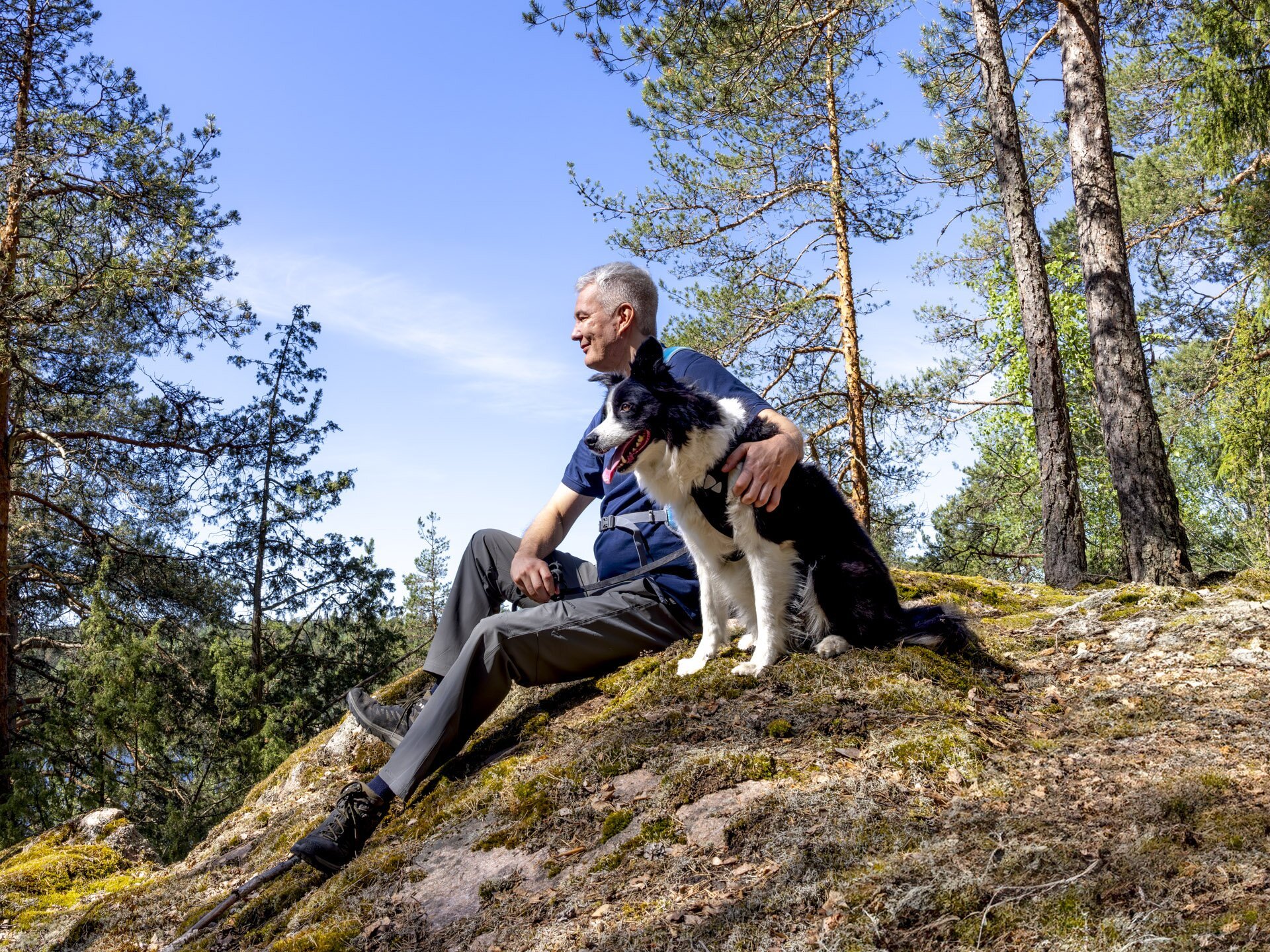Maija-Liisa Auraneva, 71, who lives with asthma, goes for a walk in the forest after breakfast. Almost every time, she sees squirrels, reindeer and other animals along the way. She also has a favourite spruce along the route.
She is a retired day care worker, so she has time for the gym, audiobooks and her summer cottage. Her daughter lives in Rovaniemi with her family, and Maija-Liisa sees them almost every day. Her sons and their families live in southern Finland, and she sees them a few times a year.
In recent years, my situation has been even more balanced, thanks to regular exercise, among other things.
Maija-Liisa’s asthma has had various stages over the years. For example, it was absent during her pregnancies, but returned after each pregnancy. Now, in retirement, she lives life to the fullest despite the limits that asthma places on her life.
“In recent years, my situation has been even more balanced, thanks to regular exercise, among other things.”
Asthma was not known in the 1950s
Maija-Liisa was three years old when she was diagnosed with asthma. The family lived in Tornionjokilaakso on a farm, where taking care of animals, as well as living with hay dust, were part of daily life. Maija-Liisa had to spend a lot of time in hospital.
“Public awareness of asthma was practically non-existent in the 1950s, and the situation wasn’t much better among doctors.”
When Maija-Liisa was 10 years old, she was admitted to an allergy hospital in Helsinki, where she was examined by a specialist in children’s allergies and asthma.
“The allergy tests showed that I was allergic to animal dander, hay, cigarette smoke and many foods.”
The family were instructed to change out of their farming clothes into clean clothes before coming indoors and to keep their hunting dogs and cats outside, which made the situation easier. Over time, she also found relief from asthma sprays, which were introduced in pharmacies in the 1970s. Before that, the treatment had been adrenaline injections, which were used when an asthma attack occurred.
Despite her illness, Maija-Liisa was able to study, have hobbies and begin working like everyone else. As a teenager, she felt embarrassed to talk about her asthma. In hindsight, however, the illness has also been beneficial.
“I didn’t follow suit when others started to experiment with smoking.”
A home suitable for an asthmatic
Maija-Liisa’s daughter was also diagnosed with asthma as a child. Maija-Liisa stayed at home for a while and worked as a childminder for children with asthma and allergies. It helps that her home has been renovated to be suitable for asthmatics.
For example, there were no wall rugs or dust-collecting carpets in the home, and houseplants were abandoned because the daughter was allergic to the spores in their soil. Only non-irritating products were chosen for detergents and cosmetics.
“Our neighbours who didn’t know us that well must have thought that we were obsessed with cleaning. When our younger son was ten, he told a family we knew that cleaning was a hobby our whole family shared,” Maija-Liisa says with a laugh.
Asthma prevented visits to families with pets
Asthma triggers were harder to avoid outside the home. For example, workplace training events were sometimes held in hotels, where smoking was allowed at the time. When others were having a good time, Maija-Liisa sat alone in her hotel room. When she was visiting friends, she sometimes needed to leave because of scented candles.
The illness has also caused embarrassing situations, and people have been upset when Maija-Liisa has not been able to visit families with pets, for example.
“Many people don’t know that dust from pets rises into the air, sticks to surfaces and cannot be removed by normal cleaning.”
Nowadays, Maija-Liisa is no longer embarrassed. For example, if the perfume of the person sitting next to her at the theatre affects her breathing, she takes her medication without leaving her seat.
Her animal allergies have eased a little over time, and Maija-Liisa is now able to stay in the same space with a dog, for example, without a reaction. On the other hand, her allergic reactions to insect stings have become more severe.
There is good in every day
Maija-Liisa wants to provide support to other asthmatics, because practically no peer support was available when she or her daughter were diagnosed. One way to help others is to speak about asthma as an experiential expert at events held by the Organisation for Respiratory Health in Finland.
“It feels wonderful if I can help even one person. Initially, an asthma diagnosis may become as a shock, and people are uncertain about how they can cope. Volunteer work also gives me strength.”
Initially, an asthma diagnosis may become as a shock, and people are uncertain about how they can cope. Volunteer work also gives me strength.
Maija-Liisa has also made many new friends through her involvement in asthma-related organisations. Maija-Liisa and her friends share experiences of their illness, but they also talk about completely different subjects. Maija-Liisa’s friends and spouse help her keep her spirits up, which is important in coping with daily life.
“We joke around and try to find something good even in the worst days. My husband and I have been together for a long time, so we have plenty of good memories to talk about.”
Maija-Liisa Auraneva’s tips for asthmatics
- Get moving, because exercise is good for your mind and body. You can exercise at your own pace, according to your strength.
- Follow your doctor’s instructions concerning medication.
- Take your limitations into account, seek peer support and keep an open mind.











